The overlap rule is one of the most fundamental parts of volleyball, yet even at the college level incoming (and sometimes returning) players don’t really understand the rule. While the rule in and of itself is quite simple, understanding its application can often times be overlooked even by experienced players.
The following diagram illustrates overlap relationships with a line drawn between each player that must maintain their relationship relative to the center line (the line directly underneath the net) represented by a vertical line on the diagram, and a sideline (represented by a horizontal line). When the server makes contact with the ball P2, P3, and P4 must always have a part of their foot in contact with the floor closer to the center line than the person that they are sharing a ‘vertical line’ with. P1 and P2 must always have a part of their foot in contact with the floor closer to the right sideline than the person they are sharing a horizontal line with, and P4 and P5 must always be closer to the left sideline than the person they are sharing a horizontal line with. Note, that P3 and P6 have THREE relationships to maintain, while P1, P2, P4, and P5 only have TWO relationships to maintain. Important to note, the server is exempt from the overlap rule.
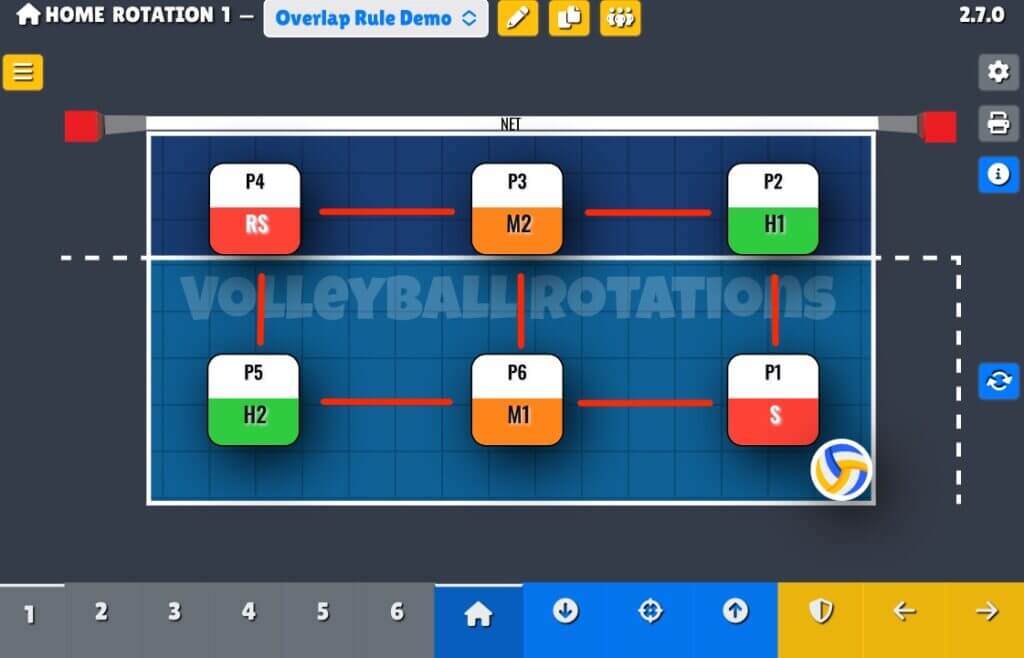
Let’s look at this now with some basic positions in a simple rotation on the court. Note that S is the setter, RS your right side hitter, M2 and M1 are your middles, and H1 and H2 are your left side hitters. Hitters with a ‘1’ are the hitters who will be in two 2-hitter rotations, and hitters with a ‘2’ will be in two 3-hitter rotations assuming you are running a 5-1 offense.
Using this as our basic rotational alignment, let’s play a game to see what is legal, and what’s not.
Is this Rotation Legal?

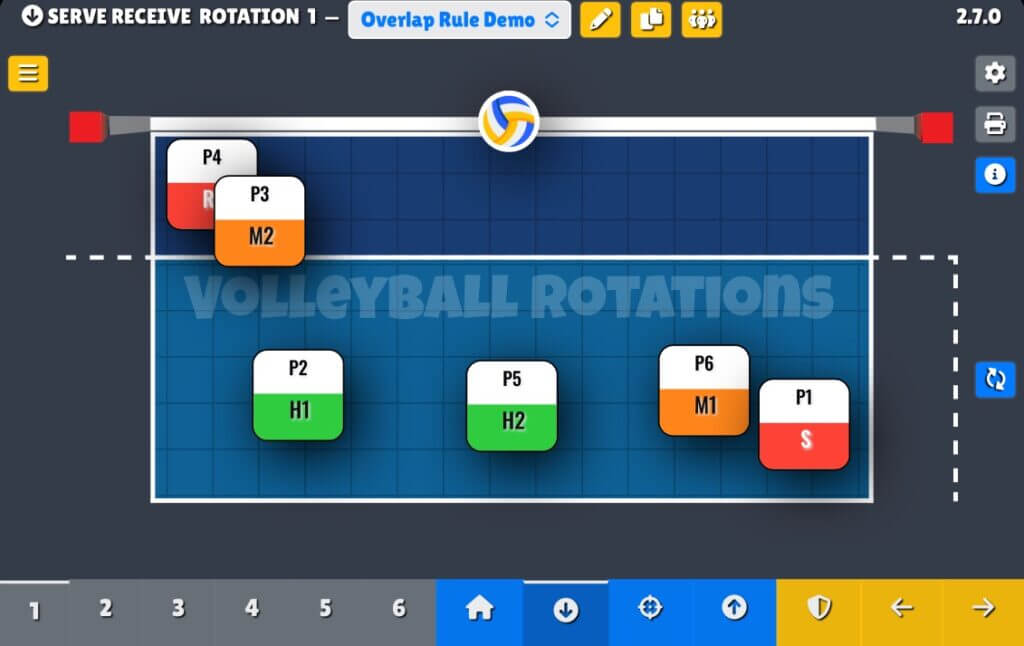
The rotation above is correct. All of the players have maintained their appropriate relationships. A few notes… The setter needs to be behind H1, not M1. H1 and H2 have no overlap relationship, meaning who is in front or back, who is to the left or right makes no difference.
Is this Rotation Legal?

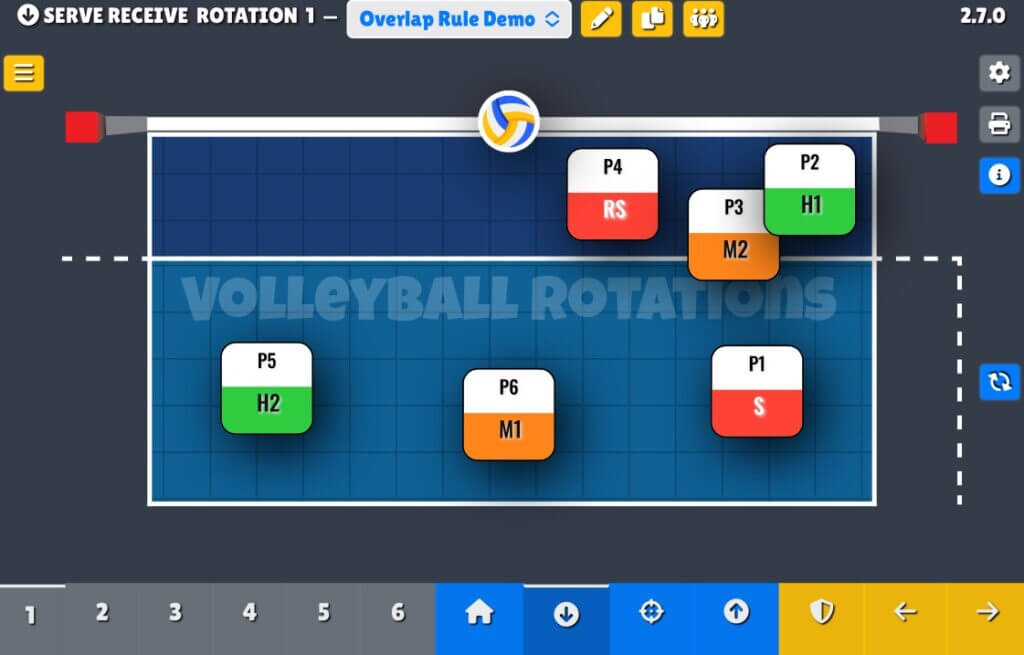
The rotation above is also correct. All of the players have maintained their appropriate relationships. Note that the setter remains to the right of M1 and behind H1 and the RS remains closer to the net than H2 and to the left of M2.
Is this Rotation Legal?

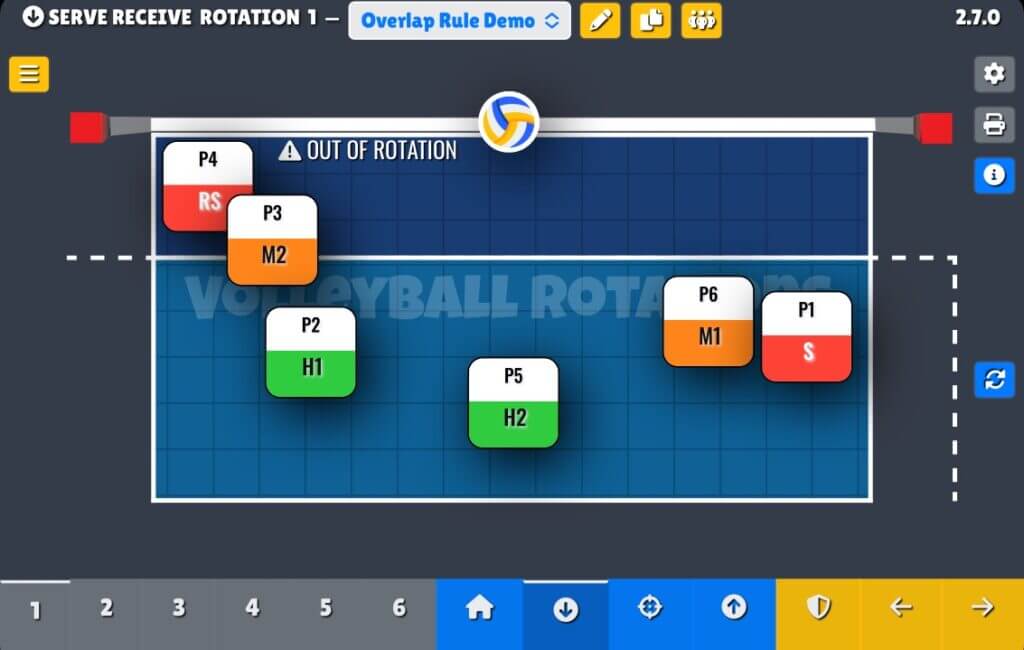
The rotation above is INCORRECT. Because H1 is closer to the net than H2 at first glance the rotation looks ‘ok’, but the overlap relationship between H1 and H2 doesn’t matter at all. H1 must be ahead of the setter, who in this serve receive rotation is closer to the net than H1 is, putting H1 in an illegal position. It doesn’t matter that the setter is behind M1 at all, because she is just required to be to her right. H1 can stand behind H2, that’s fine as well, however the setter must be closer to the end line than H1 for the play to be legal.
Using the Overlap rule to your advantage
Take a look at the base rotation below (most coaches refer to it as rotation 3 or rotation 5), download the volleyball rotations app and setup how you would have your players line up in serve receive.
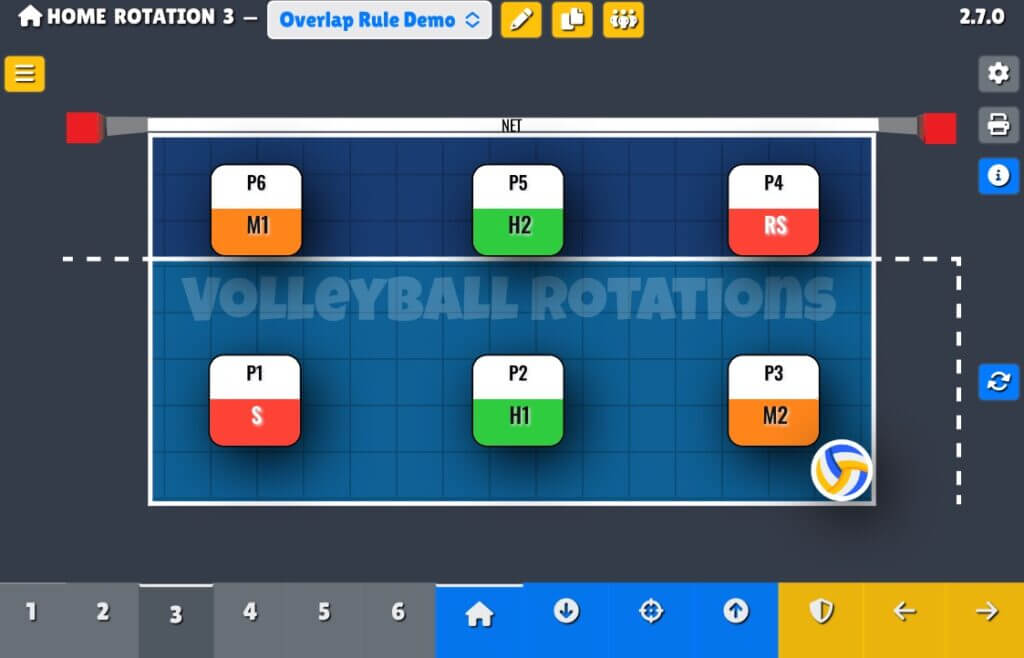
Now, take a look below at one of the most common serve receive patterns in this rotation, where the H2 passes in left back. The setter is where most setters start. However, if you look closely you’ll notice that the setter can actually start where the ball is. This is a simple example of how better understanding the overlap rule can help your team function better.
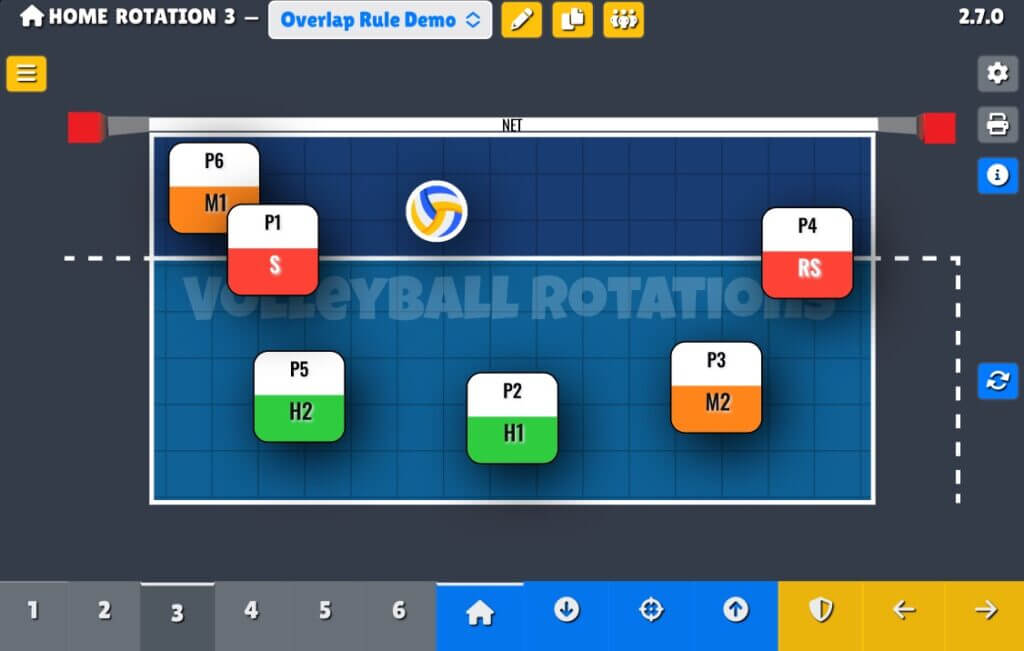
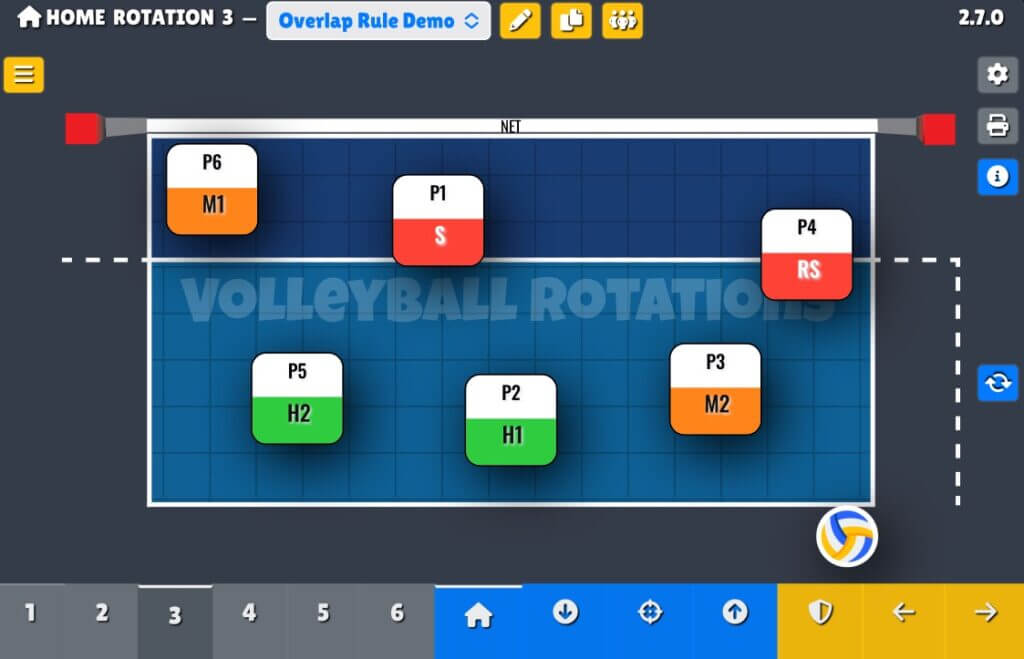
Take 15 minutes very early in your season to show your players the overlap rule. Put 6 players on a court or use the volleyball rotations app and explain the relationships they need to be aware of. Then manipulate their positioning to show them how ‘crazy’ positioning can be legal, and small adjustments from typical positioning can be illegal. Finally, move them around, and have them determine whether the formation is legal or illegal.
Use this as a quick time to point out the responsibility of the individuals and players to hold themselves accountable for staying in rotation.
Let the Volleyball Rotations App help you
Not sure if your serve receive patterns are legal or not? Let the Volleyball Rotations App help you. Assemble your team in the app and move players around in serve receive. It will let you know if it’s legal or not.
This app not only can save you from having an overlapped called, it can help your players problem solve when they get into tricky situations or as they work out new serve receive patterns and offensive combinations.

